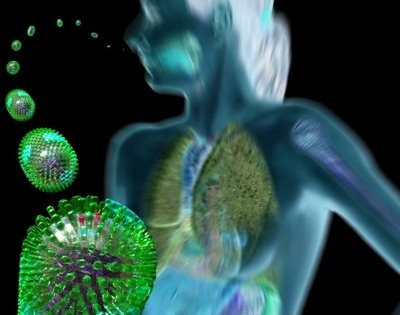 Epidemiology Typhoid Fever is an illness caused by the bacteria called Salmonella Typhi (Figure 5). There had been a record of 400 cases each year in United States with Typhoid Fever. Typhoid Fever can be easily acquired while traveling internationally, where 75% of the cases are from traveling. It is estimated that there are around 21.5 million persons each year who suffers from Typhoid fever; it is very common in the developing countries. Especially in developing countries, Scientists estimate that near south central Asia, Africa is countries that had a high incidence of Typhoid fever with the Salmonella Typhi Bacteria (Figure 6). It is estimated that there are 100 cases per 10 thousand people each years. It is also more common to occur in children and young adults. Causes and Transmission Typhoid and are a type of diseases causes by unclean water. People can also get typhoid fever through handled food or drink by a person who has contact with salmonella Typhi. It is usually causes by sewage contaminated with the Salmonella Typhi bacteria which gets into the water people drinks or washing the food for example vegetables (See Figure 4). Once the bacteria, Salmonella Typhi gets into human body, they will carry the bacteria in their bloodstream and intestine. The bacteria will multiply and spread throughout the bloodstream. Although sometimes when the person is fully recovered from typhoid fever, the bacteria Salmonella Typhi may still be left inside the human body and continues to carries the bacteria. There are also signs and tests that could be test to do a complete blood count which will show high number of white blood cells, indicating that there may be a chance of Typhoid Fever, an ELISA urine test also could look for the bacteria that causes Typhoid fever. Host Response and Major Symptoms A person with Typhoid fever usually had major symptoms of high fever, as high as 103 to 104 F, which are around 39 to 40 Celsius. Usually, victims with Typhoid fever will also have stomach pains, feel weak, headache and lost of appetite. It may sometimes causes patients to have rash and red colored sports on their body (Figure 7). The only way to identify Typhoid Fever is to have the patient’s blood or stool tested for the presence of Salmonella Typhi. The symptoms of fever occur due to the fact that the patient’s white blood cells in their body are actively fighting the bacteria, which causes to host to response and fever occurs. Typhoid fever could also causes diarrhea, other symptoms include, abdominal tenderness, chills, confusion, difficult paying attention, nosebleeds, serve fatigue, Agitation, Hallucinations. Treatments The treatments for Typhoid Fever is antibiotics, there are three commonly use antibiotics that could treat the disease. They are amplicillin, trimethprim-sulfamethoxazole, and ciprofloxacin. Usually patient with Typhoid fever will feel better after 2 -3 days of taking antibiotics. It is rarely that people die from Typhoid fever. However, if people do not seek for help and do not get any treatment may suffer fever symptoms for weeks to months and 20% in the population of not seeking any treatment had died due to infection. As stated above, Typhoid fever doesn’t go away after the person is recovered from Typhoid fever. It is recommended for patient to take the antibiotics as long as the doctor has required the patient to. Also wash your hands frequently with soap and water to lower the chance of passing the infection on to someone else. Doctor could also perform stool cultures to ensure that the bacteria will not remain in your body. If the fever gets serious, fluids and electrolytes may also be needs to wash the vein, also doctors may be asked to drink uncontaminated water to get rid of the bacteria in the patient’s body. Prevention and Control In order to prevent and control Typhoid Fever, people who are traveling to a countries where typhoid fever is common should ask doctor for vaccinate again typhoid (Figure 8). Vaccination will take at least 1-2 weeks to take effect, in which travelers is suggest to take vaccination before going to places that Typhoid is common, below is a typhoid vaccines tables showing the different vaccine that could be taken in order to avoid Typhoid Fever. People could also prevent fever by washing their hands frequently and avoid eating food in areas that are unclean. Also in order to control the amount of typhoid fever continue to develop in developing countries. People could donate and let the people in the areas to have clean waters and education that could lessen the chance of people getting the disease. Also to improve the water disposal and protecting the food supply from contamination in developing countries are also important and could prevent the disease to spread out. |
In this section, it presents an individual Report about the infectious disease that are caused by bacteria through water. Students were required to undergo an research and present a summary of the fever, the heading are as follows: Epidemiolgy, causes and transmission, Treatments and Prevention and Convol. A video shows an summary and gives an over of the Typhoid Fever.Click the Image below to enlarge the image which gives an better understanding of Typhoid Disease!! |
|